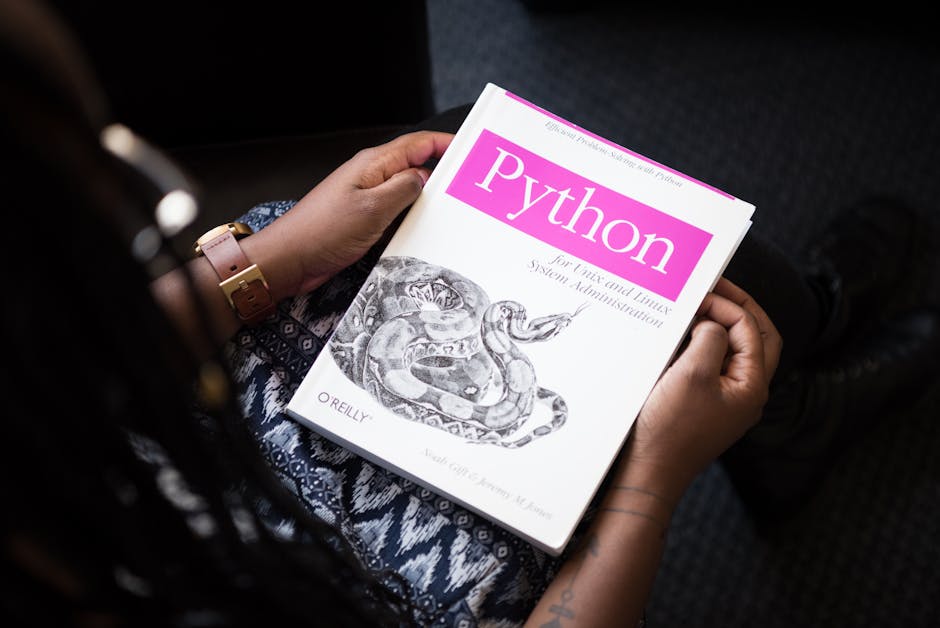Best Python Libraries for 2025 and Beyond: A Comprehensive Guide
Python’s enduring popularity stems from its versatility and vast ecosystem of libraries. As we approach 2025, certain libraries are poised to become even more indispensable for developers across various domains. This comprehensive guide explores the leading contenders, analyzing their strengths, applications, and future potential. We’ll delve into how these tools can streamline your workflows and empower you to build cutting-edge applications. Whether you’re a seasoned Python pro or just beginning your journey, understanding these libraries is crucial for staying ahead of the curve in the ever-evolving world of programming.
This guide aims to provide a forward-looking perspective, anticipating the trends and needs of the software development landscape in the coming years. We’ll move beyond simple library introductions to explore their practical implications and how they can contribute to your success.
Background: The Evolution of Python Libraries

Python’s success hinges on its expansive library ecosystem. Early libraries focused on foundational tasks, but the landscape has drastically evolved. We’ve seen the rise of specialized libraries for data science, machine learning, and web development, mirroring the growing complexity and diverse applications of Python itself. The trend continues, with libraries becoming more sophisticated, integrated, and user-friendly. The competition is fierce, leading to constant innovation and improvement within the community.
Key Milestones in Python Library Development
The evolution of Python libraries has been marked by several crucial milestones, including the rise of NumPy for numerical computing, the emergence of Pandas for data manipulation, and the explosion of machine learning libraries like Scikit-learn and TensorFlow. Each milestone has spurred further development, leading to the rich ecosystem we see today.
Importance: Why Choose the Right Libraries?

Selecting the appropriate libraries is paramount for efficient and effective programming. The right tools can significantly reduce development time, improve code quality, and enhance the overall performance of your applications. Conversely, using outdated or inappropriate libraries can lead to bottlenecks, increased complexity, and ultimately, project failure.
The Impact of Library Selection on Project Success
The impact of library selection cannot be overstated. It affects everything from project feasibility to maintainability. Choosing powerful, well-maintained libraries that align with your project’s goals is crucial for achieving success. It is equally important to consider the longevity and community support of a library before integrating it into a larger project.
Benefits of Utilizing Leading Python Libraries

Utilizing leading Python libraries offers several key advantages: increased productivity through readily available functions and modules, improved code readability and maintainability, access to cutting-edge algorithms and techniques, and the benefit of a large, active community for support and collaboration.
Boosting Productivity and Efficiency
Leveraging pre-built libraries drastically reduces the amount of code you need to write from scratch, freeing up time and resources for more complex aspects of your projects. This accelerates the development process and reduces the potential for errors.
Steps to Selecting and Implementing Python Libraries

Choosing and integrating Python libraries requires a methodical approach. Begin by clearly defining your project’s requirements and goals. Then, research the available libraries, focusing on features, community support, and documentation. Thorough testing is crucial before committing to a library in your project. Always remember to review the license terms before implementation.
A Step-by-Step Guide to Library Integration
- Define Requirements: Clearly articulate your project’s needs and functionality.
- Research Libraries: Explore available options, focusing on features, community support, and documentation.
- Test Thoroughly: Before full integration, test the library extensively in a controlled environment.
- Review License: Carefully review the library’s license terms to ensure compliance.
- Integrate and Deploy: Integrate the chosen library into your project and deploy your application.
Examples of Top Python Libraries for 2025

Predicting the precise top libraries for 2025 is challenging, but several are strong contenders. These include libraries focusing on data science (like Dask and Vaex for handling large datasets), machine learning (like PyTorch and TensorFlow, continually evolving), and web development (like FastAPI, known for its performance and ease of use). Libraries supporting emerging technologies like quantum computing and AI are also rapidly developing. This dynamic landscape necessitates continuous monitoring of the latest advancements.
Detailed Examples of Specific Libraries and Their Use Cases
- Dask: Parallel computing for large datasets.
- Vaex: Out-of-core dataframes for efficient handling of massive data.
- PyTorch: Deep learning framework known for its flexibility and ease of use.
- TensorFlow: Another popular deep learning framework with a large and active community.
- FastAPI: Modern, high-performance web framework.
Strategies for Staying Up-to-Date with Python Library Trends

The Python landscape is constantly evolving. Staying informed about new libraries and updates is vital. Engage with the Python community through forums, conferences, and online resources. Regularly monitor relevant blogs, articles, and publications dedicated to Python and its libraries.
Key Strategies for Staying Ahead of the Curve
- Follow Python Blogs and Publications: Stay abreast of the latest advancements.
- Participate in Online Forums: Engage in discussions and learn from experienced developers.
- Attend Python Conferences: Network and learn from industry experts.
- Experiment with New Libraries: Hands-on experience is crucial for understanding capabilities.
Challenges and Solutions: Overcoming Obstacles in Library Integration
Integrating new libraries can present challenges. Compatibility issues between libraries, difficulties understanding documentation, and performance bottlenecks are common problems. Careful planning, thorough testing, and effective troubleshooting are crucial for successful library integration.
Addressing Common Problems in Library Usage
- Compatibility: Carefully review library compatibility before integration.
- Documentation: Utilize the documentation and online resources for guidance.
- Performance: Profile your code to identify and resolve performance bottlenecks.
- Community Support: Leverage community forums for troubleshooting and support.
FAQ
Q: How often should I update my Python libraries?
A: Regularly check for updates, especially for security patches. Major updates should be thoroughly tested before deployment.
Q: What if a library I need is not well-documented?
A: Look for community forums and support channels. Contribute to the documentation if you have the expertise.
Q: How can I manage conflicting dependencies between libraries?
A: Use virtual environments to isolate project dependencies. Tools like pip and conda help manage them effectively.
Q: What is the best way to learn about a new Python library?
A: Start with the official documentation. Then, explore tutorials, examples, and community resources.
Q: Are there any resources for discovering new and upcoming Python libraries?
A: Yes! Sites like PyPI (Python Package Index) and various Python community blogs regularly showcase new and trending libraries.
Conclusion: Embracing the Future of Python Development
The Python library landscape is vibrant and dynamic, constantly evolving to meet the demands of modern software development. By staying informed, adopting a strategic approach to library selection, and actively engaging with the community, you can leverage these powerful tools to build innovative and efficient applications. The future of Python is bright, and by mastering its libraries, you can be at the forefront of innovation.
Call to Action: Start exploring the libraries discussed in this article today! Begin experimenting with those that align with your interests and project goals. By embracing continuous learning and actively participating in the Python community, you can unlock the full potential of this versatile language and its ever-expanding capabilities.

